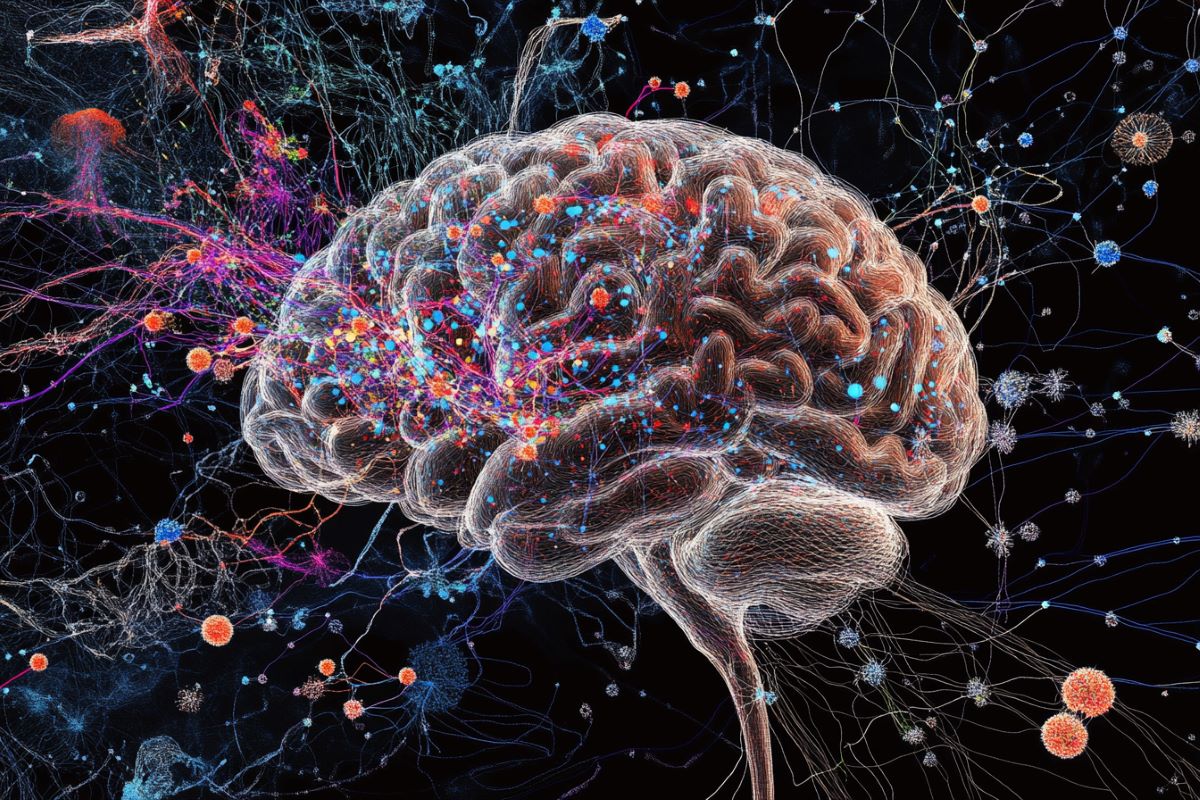How will your competent? doctor EXACTLY PREVENT THIS POST STROKE? NO plan? So, you don't have a functioning stroke doctor, do you?
Brain Connectivity Patterns Link Vascular Disease to Cognitive Decline
Summary: Researchers have identified how cerebrovascular disease (CeVD) disrupts brain connectivity, contributing to cognitive decline and neurodegeneration alongside Alzheimer’s disease (AD). By studying brain networks and blood biomarkers in older adults, they discovered distinct but additive effects of CeVD and AD-related markers on cognition and brain atrophy. CeVD acts as a global disruptor of brain communication networks, while AD markers, such as plasma p-tau181, follow separate pathways.
These findings emphasize the potential of combining neuroimaging and blood biomarkers for early detection and monitoring of dementia(Useless! Where is the prevention protocol? Oh, you incompetently haven't done that research?). The study provides new insights into the independent roles of CeVD and AD in driving cognitive and structural brain changes. Future research aims to refine brain connectivity markers for earlier predictions and targeted interventions.
Key Facts:
- Dual Pathways: CeVD and AD markers independently and additively affect cognition and brain atrophy but do not synergize.
- Brain Connectivity Impact: CeVD disrupts global brain network communication, influencing cognitive decline.
- Predictive Biomarkers: Neuroimaging and blood-based markers show promise for early dementia risk assessments.
Source: NUS
Researchers have uncovered novel insights into how brain function disruptions related to cerebrovascular disease (CeVD) interact with Alzheimer’s disease (AD) pathology to impact neurodegeneration and cognition in older adults.
Led by Associate Professor Juan Helen Zhou, Director of the Centre for Translational Magnetic Resonance Research, Yong Loo Lin School of Medicine, National University of Singapore (NUS Medicine), the research team revealed a brain functional connectome phenotype that is related to multiple CeVD markers and contributes additively to cognitive decline and neurodegeneration alongside AD.

The study highlights CeVD as a global disruptor of brain connectivity, reshaping our understanding of its role in dementia.
CeVD, often co-occurring with AD, has long been a significant area of study in ageing and dementia research. It refers to a group of conditions that affect the blood vessels and blood flow in the brain, such as stroke, cerebral atherosclerosis (narrowing or hardening of larger brain arteries due to plaque buildup), and small vessel disease that affects the tiny blood vessels in the brain.
These conditions can lead to brain damage by disrupting the delivery of oxygen and nutrients, which are essential for normal brain function.
In the study, published in Alzheimer’s & Dementia: The Journal of the Alzheimer’s Association, the team examined the brain’s functional organisation in 529 older adult participants across the dementia spectrum, ranging from those with healthy cognition to individuals diagnosed with AD.
Analyzing how the different markers of CeVD and brain activity patterns correlate with affecting the participants, the team identified a global functional connectome phenotype, or a unique pattern in the brain’s communication network, that is strongly associated with high levels of the burden of four markers of CeVD seen on brain scans.
A key finding of the study was the identification of divergent effects of p-tau181, a blood-based biomarker for AD, and CeVD-related functional connectome phenotype on cognitive decline and brain atrophy.
While the two factors contributed additively to longitudinal cognitive decline and brain atrophy, the study found no evidence of a synergistic relationship between CeVD and p-tau181, suggesting that these factors may influence neurodegeneration in distinct pathways.
A/Prof Zhou said, “We discovered that a CeVD-related brain network phenotype, along with a key Alzheimer’s disease blood biomarker, can provide powerful insights into the future trajectory of cognitive decline and neurodegeneration.
“Our findings highlight the potential of brain connectome-based markers to track cognitive decline, particularly for individuals at-risk for dementia, and underscore the importance of integrating neuroimaging and blood biomarkers to better understand the pathophysiology of these co-occurring diseases.”
Dr Joanna Su Xian Chong, senior research fellow from A/Prof Zhou’s group, who is also first author of the study, added, “This pattern shows how the burden of multiple cerebrovascular disease markers can collectively exert widespread influences on brain function.
“Importantly, the combination of this pattern linked to CeVD and plasma p-tau181, a marker of Alzheimer’s disease, had independent and additive effects on long-term outcomes.
“Together, they contributed to cognitive decline and increased brain atrophy at baseline and over time, but did not interact directly to amplify each other’s effects.”
Both A/Prof Zhou and Dr Chong are also from the Centre for Sleep and Cognition and Healthy Longevity & Human Potential Translational Research Programmes at NUS Medicine.
Moving forward, the team aims to explore how the brain communication pattern linked to CeVD is affected by the severity, cause, and location of CeVD markers throughout the progression of the disease.
They also plan to investigate how this pattern interacts with different AD markers to contribute to brain degeneration and decline in multiple cognitive domains. Additionally, they aim to determine if these brain network features can be used as a reliable biomarker to monitor current and future cognitive decline, particularly in individuals at risk for dementia.
These features could offer more precise predictions than traditional brain imaging methods and help identify long-term cognitive outcomes earlier.
Their goal is to better understand the brain mechanisms behind CeVD and AD to develop advanced imaging tools for early detection and disease monitoring.
Funding: This research is supported by the National Research Foundation, Singapore under the NMRC Open Fund – Large Collaborative Grant (MOH-000500) and administered by the Singapore Ministry of Health through the NMRC Office, MOH Holdings Pte Ltd.
Participants for the study were recruited from the National University Hospital and St Luke’s Hospital.
About this neuroscience research news
Author: Gladys Sim
Source: NUS
Contact: Gladys Sim – NUS
Image: The image is credited to Neuroscience News
Original Research: Open access.
“Additive
effects of cerebrovascular disease functional connectome phenotype and
plasma p-tau181 on longitudinal neurodegeneration and cognitive outcomes” by Juan Helen et al. Alzheimer’s & Dementia
No comments:
Post a Comment